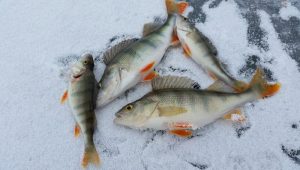Bass Fishing
Bass fishing, a pastime enjoyed by many, is not just a sport but an art that blends skill, patience, and knowledge of the aquatic environment. Targeting bass, particularly the largemouth and smallmouth varieties, offers both a challenge and a reward for anglers of all levels.
Bass fishing offers endless challenges and rewards, repeatedly drawing anglers back to the water. Whether you’re a novice learning the basics or an experienced angler refining your techniques, pursuing bass is a lifelong adventure. By understanding the behaviour of these game fish, choosing the right gear, and employing effective strategies, you can enjoy the thrill of bass fishing while contributing to the conservation of these magnificent species.
This guide delves into the essentials of bass fishing, covering techniques, gear, and strategies to help you succeed in landing these sought-after game fish.
Bass
In North America, bass fishers target a variety of fish species known collectively as bass, including largemouth bass (Micropterus salmoides), smallmouth bass (Micropterus dolomite), spotted bass or Kentucky bass (Micropterus punctulatus), and Guadalupe bass (Micropterus sterculia).
All the species of bass belong to the genus Micropterus and are freshwater fish. Bass is widely distributed east of the Rocky Mountains in North America, from the Hudsay Bay basin in the north to north-eastern Mexico in the south.
Two of the most popular bass species among anglers are largemouth and smallmouth bass, which have been widely introduced outside their native range.
Largemouth Bass (Micropterus salmoides)
Known for its size and aggressive strikes, the largemouth bass is a favourite among freshwater anglers. Distinguished by a wide jaw that extends beyond its eyes, it inhabits vegetated waters across North America. Largemouth bass very much prefers environments in the water with plenty of vegetation.

The largemouth bass is olive-green to greenish-gray and adorned by a series of dark blotches that form a jagged stripe along each flank.
The largemouth bass is the largest of all the black basses. The longest specimen on record was 29.5 inches. The maximum unofficial weight is 25 lb 1 oz. Typically, the females grow larger than the males.
The average lifespan for a wild largemouth bass is 10-16 years.
Smallmouth Bass (Micropterus dolomieu)
Preferring cooler, clearer waters with rocky or sandy bottoms, the smallmouth bass is celebrated for its spirited fight when hooked. It is smaller than its largemouth cousin but equally esteemed among anglers. It is called smallmouth because, unlike the largemouth bass, its protruding jaw does not extend further than the eyes.

The smallmouth bass has a slender but muscular body and is a very strong swimmer, which helps it be a successful ambush predator. The body is golden-olive to dark brown dorsally and yellowish-white ventrally. Vertical bars or blotches, which are dark brown, run along the body, and there are also dark brown horizontal bars on the head. Like largemouth bass, the smallmouth female grows bigger than her male counterparts. You can expect males not to weigh more than 2 lbs, while big females are in the 5-6 lbs range. The heaviest recorded smallmouth bass weighed 11.94 lbs.
Smallmouth bass living in rivers are usually a bit longer and more slender to ensure better agility in moving waters. In other habitats, they grow a bit shorter and develop deeper bodies.
There are two recognized subspecies of smallmouth bass: The northern smallmouth bass (M. dolomite dolomite) and the Neosho smallmouth bass (M. dolomite velox). The Neosho are only found in the Central Interior Highlands of the lower Midwest in the U.S.
Gear and Tackle
Rods and Reels: A medium-heavy rod with a fast action is ideal for largemouth bass, providing the sensitivity and power needed for casting lures and setting the hook. For smallmouth bass, a medium-light to medium rod offers the flexibility to cast smaller lures and fight these energetic fish.
Line: Braided lines are popular for their strength and sensitivity, allowing anglers to feel subtle bites. Fluorocarbon lines are also favoured for their invisibility underwater, making them a good choice for clear water conditions.
Lures and baits: The choice of lures is vast, including plastic worms, crankbaits, spinnerbaits, and topwater lures. Live bait, such as minnows or nightcrawlers, can also be effective. The key is to match the lure or bait to the bass’s natural prey and the current conditions.
Techniques and strategies
Casting and retrieval
Mastering various casting techniques, such as flipping, pitching, and casting, enhances your ability to present lures effectively. Varying the speed and pattern of your retrieval can entice bass to strike, especially if it mimics the erratic movement of their prey.
Seasonal patterns
Understanding how bass behaviour changes with the seasons is crucial for success. In spring, bass move to shallow waters to spawn, making them more aggressive. Summer sees bass in deeper, cooler waters during the day, moving shallow at dawn and dusk to feed. Fall brings bass back to shallows as they prepare for winter, while winter sees them in deep water, less active and harder to catch.
Water conditions
Clarity, temperature, and structure (such as weeds, rocks, and docks) significantly influence bass location and feeding patterns. Clearwater favours sight-based lures and slow presentations, while murky water requires louder, more vibrant lures to attract bass.
Conservation and ethical practices
Responsible bass fishing ensures the sustainability of bass populations and their habitats. Catch-and-release practices when appropriate, proper handling to minimize stress and injury to the fish, and adherence to local regulations are all part of ethical angling.


